
The Bréguet Br 960 Vultur was a prototype two-seat carrier-based attack and anti-submarine aircraft (ASW) built for the French Navy during the early 1950s. Meeting contradictory endurance and speed requirements, it was designed as a "mixed-power" aircraft with a turboprop engine in the front and a turbojet in the rear. Only two examples were built, but the second aircraft was rebuilt as the prototype of the Bréguet 1050 Alizé ASW aircraft after the Navy dropped the idea of a turboprop attack aircraft in the mid-1950s.

The Farman F.220 and its derivatives were thick-sectioned, high-winged, four engined French monoplanes from Farman Aviation Works. Based on the push-pull configuration proven by the F.211, design started in August 1925 and the first flight of the prototype was on 26 May 1932. The largest bomber to serve in France between the two world wars was the final F.222 variant. One variation was intended to be an airliner.
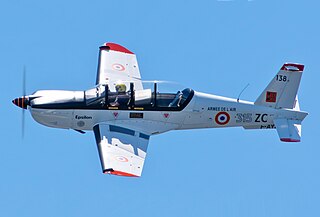
The Socata TB 30 Epsilon is a light military trainer aircraft produced by SOCATA. It is a tandem two-seater with a metal airframe. The first prototype flew on 22 December 1979.
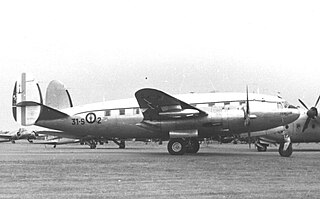
The Sud-Ouest S.O.30 Bretagne was a 1940s French airliner built by Sud-Ouest.

The Turbomeca Astazou is a highly successful series of turboprop and turboshaft engines, first run in 1957. The original version weighed 110 kg (243 lb) and developed 240 kW (320 shp) at 40,000 rpm. It was admitted for aviation service on May 29, 1961, after a 150-hour test run. The main developing engineer was G. Sporer. It was named after two summits of the Pyrenees.
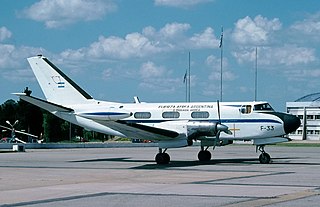
The I.A. 50 Guaraní II is an Argentine utility aircraft designed at the DINFIA in the early 1960s.
The Arsenal VB 10 was a French fighter-interceptor aircraft developed during and shortly after World War II. It was a low-wing monoplane with retractable tailwheel undercarriage and of largely orthodox configuration. The ultimate product of a design that began with the Arsenal VG 10 prior to the war, the VB 10 added a second engine behind the cockpit which drove a second propeller, coaxial with and contra-rotating to the propeller driven by the engine in the nose.

The Breguet 941 is a French four-engine turboprop short takeoff and landing (STOL) transport aircraft developed by Breguet in the 1960s. Although widely promoted, both by Breguet in France and by McDonnell Aircraft and McDonnell Douglas in the United States, it was not built in large numbers; only one prototype and four production aircraft were built.

The Fouga CM.8 or Castel-Mauboussin CM.8 was a French sailplane of the 1950s, most notable in retrospect due to its place in the development of the Fouga CM.170 Magister jet trainer.

The Dassault MD.415 Communauté was a 1950s French twin-engined light turboprop transport monoplane built by Dassault Aviation. Only one prototype was built and flown.

The Potez 840 was a 1960s French four-engined 18-passenger executive monoplane, the last aircraft to use the Potez name.

The Wibault 280-T was a monoplane trimotor airliner designed and produced by the French aircraft manufacturer Wibault. Designed to accommodate up to 12 passengers in its largest variant, development of the aircraft was financially backed by the Penhoët shipyards, which led to the aircraft alternatively being referred to as 'Penhoët Wibault'.

The SIPA S.200 Minijet was a light sporting jet aircraft designed and produced by the French aircraft manufacturer Société Industrielle Pour l’Aéronautique (SIPA). It is designed to perform liaison, training, and aerobatic flights. The Minijet was claimed to be the first jet-powered light touring aircraft

The Morane-Saulnier MS.755 Fleuret was a prototype French two-seat jet trainer designed and built by Morane-Saulnier. It failed to gain any orders but was developed into the larger four-seat MS.760 Paris.
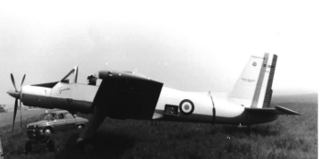
The Morane-Saulnier MS.1500 Épervier was a 1950s French two-seat ground attack and reconnaissance aircraft. Designed and built by Morane-Saulnier to meet a French Air Force requirement, it did not enter production.

The SNCASO SO.9000 Trident is a French jet and rocket powered interceptor aircraft built by aircraft manufacturer SNCASO during the 1950s. As part of a wider effort to re-build French military power during the late 1940s and to furnish France with advanced, new domestically produced designs, a request for a supersonic-capable point-defence interceptor aircraft to equip the French Air Force was issued to SNCASO. In response, the firm designed the mixed-propulsion Trident, powered by a single SEPR rocket engine, which was augmented by wingtip-mounted turbojet engines, and the Air Force ordered two prototypes.

The Bernard H.V.120 was a racing seaplane designed and built by the French aircraft manufacturer Bernard. It was developed specifically to compete in the Schneider Trophy race.
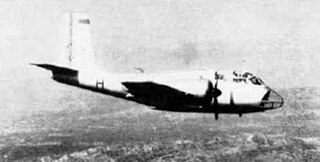
The twin turboprop Sud Aviation SE-116 Voltigeur of the late 1950s was a French army support aircraft capable of observation and ground attack operations. Three were built but no series production was undertaken.

The SNCAC NC.1070 was a piston engined attack and torpedo bomber designed and built in France shortly after World War II. The second prototype, the NC1071, was the first French multi-jet turbine powered aircraft.

The Dassault Falcon 30 was a prototype French jet-powered regional airliner of the 1970s. It was developed by Dassault Aviation from its successful Falcon 20 business jet, and was larger with more powerful engines, with capacity to carry 40 passengers. A single prototype was built, flying for the first time on 11 May 1973, but no production followed.


















